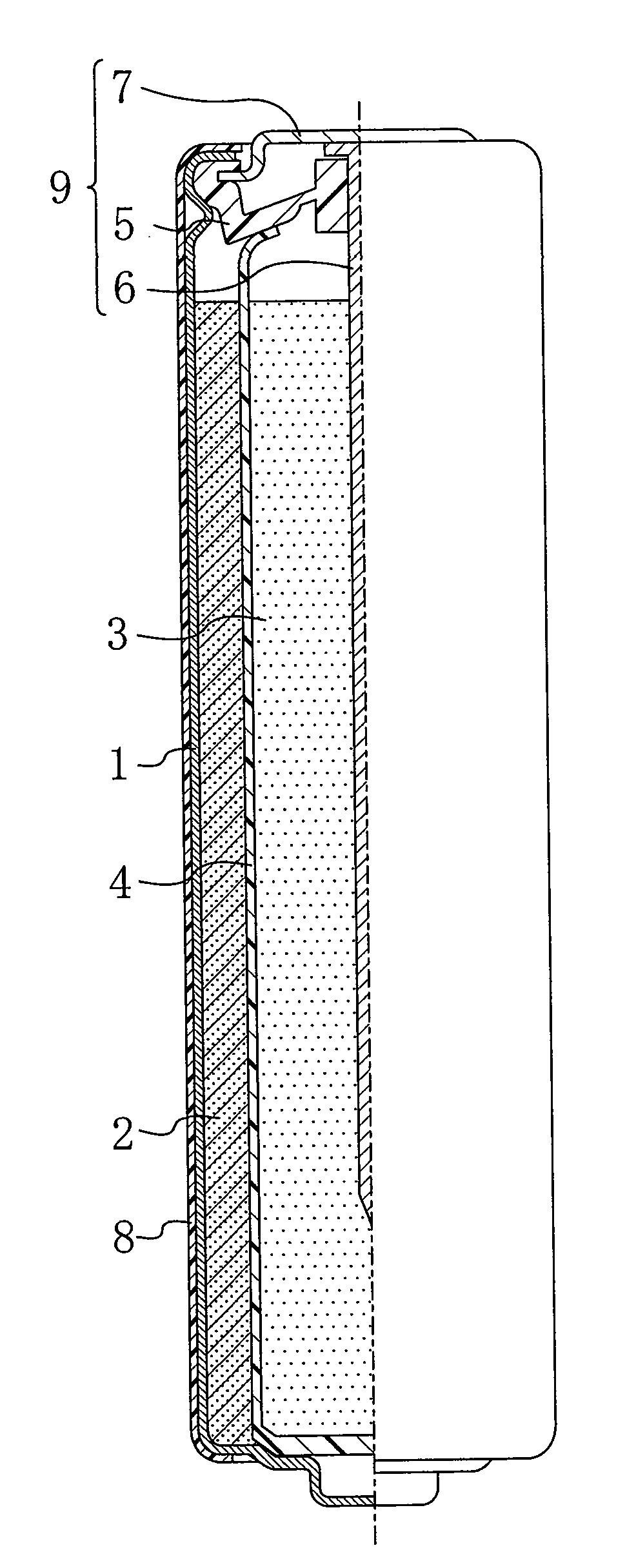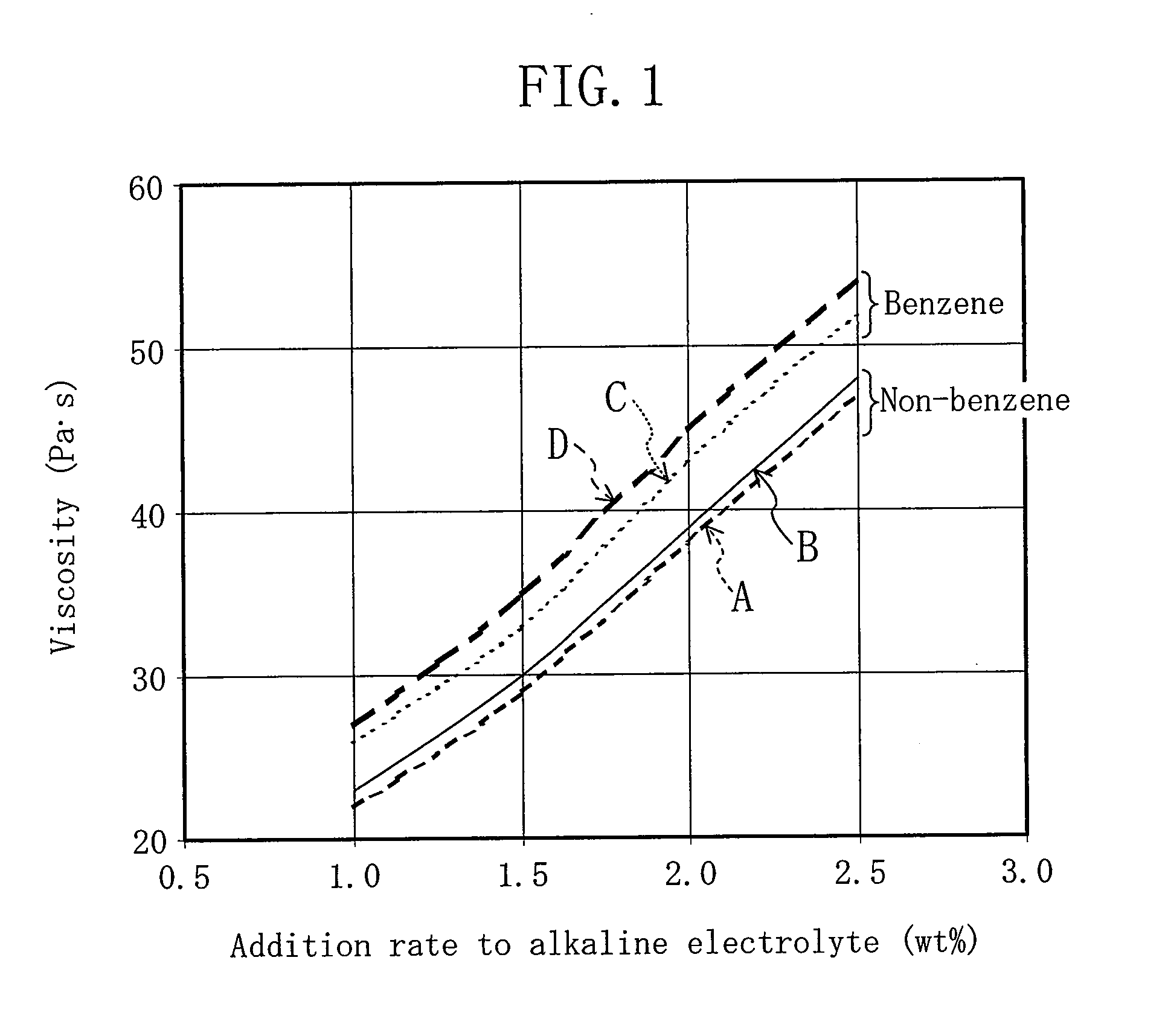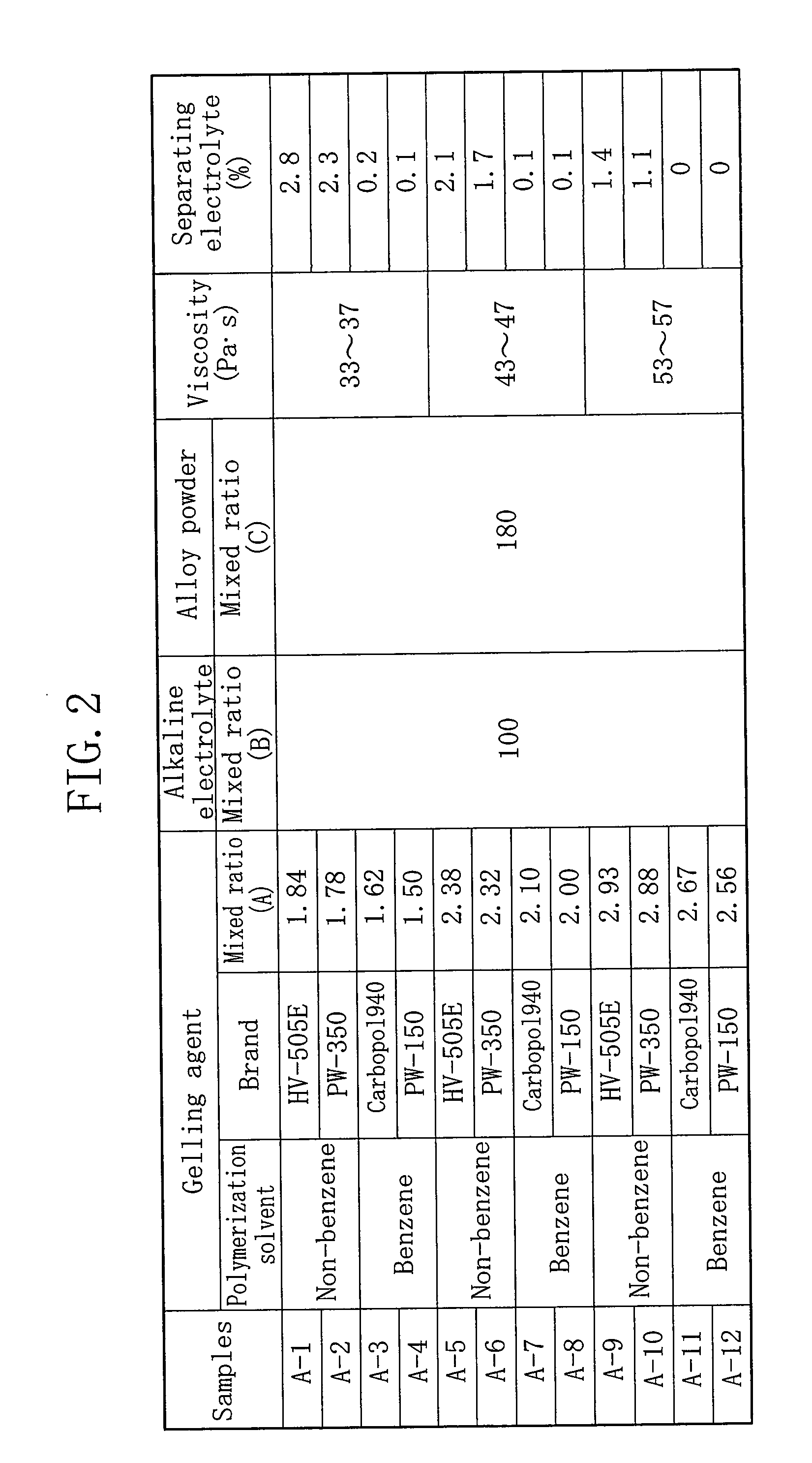Gelled negative electrode for alkaline battery and alkaline battery
a negative electrode and alkaline battery technology, applied in the direction of non-aqueous electrolyte cells, cell components, electrochemical generators, etc., can solve the problems of hardly stopping growth, hardly causing the chain transfer reaction, resonance with the benzene ring, etc., to achieve low polymerization, increase the rate of alkaline electrolyte (a), and reduce the number of manufacturing steps
- Summary
- Abstract
- Description
- Claims
- Application Information
AI Technical Summary
Benefits of technology
Problems solved by technology
Method used
Image
Examples
examples
[0098]The configuration and effects of the present invention will be described further by referencing examples of the present invention, but the present invention is not limited to the examples.
example a
[0099]In order to provide the predetermined viscosity to the gelled negative electrode, a gelling agent (a thickening agent) is added. In general, an adsorbent polymer having a degree of cross-linkage higher than a thickening agent is added to as the gelling agent for additionally providing elasticity and stringing to the gelled negative electrode.
[0100]FIG. 6 indicates measurement results of each amount of the alkaline electrolyte separating from gelled negative electrodes and each number of batteries in which voltage drop is caused in a drop test of alkaline batteries, wherein the gelled negative electrodes of the alkaline batteries were formed with gelling agents obtained by further adding an absorbent polymer to thickening agents. The same thickening agents, the same alkaline electrolyte, and the same zinc powder as those indicated in FIG. 4 were used, and the same method in FIG. 4 was employed for the measurement. As the absorbent polymer, commercially available DK-505B manufac...
example b
[0103]In the present invention, the specific surface area of the zinc powder is set within a predetermined range to suppress lowering of the alkaline electrolyte retention. This range of the specific surface area is set lower than the range of the specific surface area set for a gelled negative electrode to which a conventional gelling agent polymerized in a benzene solvent is added.
[0104]The smaller the particle size of the zinc powder is, the higher the reaction efficiency is. Accordingly, the large current discharge characteristics of a battery can be enhanced as the particle size thereof is small. In contrast, the specific surface area of the zinc powder increases as the particle size thereof is small. Namely, suppression of lowering of the alkaline electrolyte retention and improvement on the large current discharge characteristics fall in a trade-off relationship.
[0105]Formation of zinc alloy powder by adding aluminum to zinc exhibits an effect of smoothing the surface of the ...
PUM
| Property | Measurement | Unit |
|---|---|---|
| specific surface area | aaaaa | aaaaa |
| specific surface area | aaaaa | aaaaa |
| viscosity | aaaaa | aaaaa |
Abstract
Description
Claims
Application Information
 Login to View More
Login to View More - R&D
- Intellectual Property
- Life Sciences
- Materials
- Tech Scout
- Unparalleled Data Quality
- Higher Quality Content
- 60% Fewer Hallucinations
Browse by: Latest US Patents, China's latest patents, Technical Efficacy Thesaurus, Application Domain, Technology Topic, Popular Technical Reports.
© 2025 PatSnap. All rights reserved.Legal|Privacy policy|Modern Slavery Act Transparency Statement|Sitemap|About US| Contact US: help@patsnap.com



